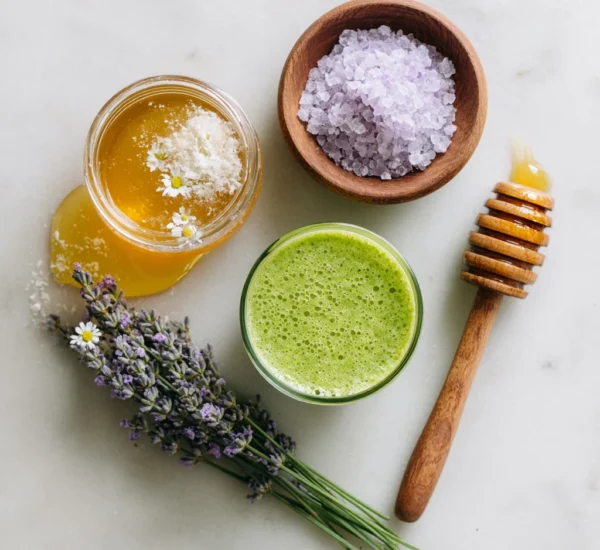The Art of Doing Nothing Without Feeling Guilty
In our hyper-productive, always-on culture, the simple act of doing nothing has become a revolutionary act. We are conditioned to equate busyness with worthiness, leading to a pervasive feeling of guilt whenever we dare to slow down and simply… be. This article explores the art of doing nothing without feeling guilty, offering practical strategies to embrace moments of stillness and reclaim your time and sanity.
Understanding the Guilt: Why is it So Hard to Relax?
The guilt associated with inactivity is multifaceted, stemming from deeply ingrained societal and personal pressures. Recognizing these underlying causes is the first step toward dismantling them.
Societal Pressures and Productivity Culture
Our society glorifies productivity. From a young age, we are taught that success is directly proportional to the amount of work we put in. Social media amplifies this pressure, constantly showcasing highlight reels of others seemingly achieving more. This creates a constant comparison game, leaving us feeling inadequate if we’re not constantly hustling. The mantra “time is money” further reinforces the idea that every moment must be used “productively,” leaving little room for rest and reflection. This cultural narrative, while intended to motivate, often leads to burnout and a diminished sense of well-being.
Internalized Beliefs About Worth and Value
Beyond societal pressures, our own internalized beliefs about self-worth also play a significant role. Many of us equate our value as individuals with our accomplishments. We believe that if we are not constantly achieving, we are somehow failing. This mindset can be particularly damaging, as it prevents us from enjoying the present moment and appreciating ourselves for who we are, rather than for what we do. Past experiences, such as childhood messages or critical feedback, can also contribute to these limiting beliefs. Overcoming this requires consciously challenging these narratives and embracing a more compassionate view of ourselves.
Fear of Missing Out (FOMO) and Social Comparison
The pervasive fear of missing out (FOMO), fueled by social media, contributes significantly to our discomfort with inactivity. Seeing others engaging in exciting activities or achieving milestones can trigger feelings of inadequacy and the urge to constantly be “doing.” Social comparison, a natural human tendency, is exacerbated by the curated realities presented online. This constant comparison can lead to a sense of dissatisfaction and the belief that we are not living our lives to the fullest if we are not constantly engaged. Detaching from social media and focusing on our own values and priorities can help alleviate these feelings.
Reframing "Doing Nothing": It's Not Laziness, It's Essential
The key to overcoming the guilt of doing nothing lies in reframing our understanding of what it truly means. It’s not laziness or a waste of time, but rather a vital component of a balanced and fulfilling life.
The Benefits of Rest and Recovery
Rest and recovery are not luxuries; they are necessities for optimal physical and mental well-being. When we allow ourselves time to truly relax, we give our bodies and minds the opportunity to recharge. This leads to improved focus, creativity, and problem-solving abilities. Adequate rest also reduces stress, boosts the immune system, and enhances overall mood. Chronic stress, on the other hand, can lead to a host of health problems, including anxiety, depression, and cardiovascular disease. Prioritizing rest is therefore an investment in our long-term health and productivity.
Mindfulness and Being Present in the Moment
Mindfulness, the practice of paying attention to the present moment without judgment, is a powerful tool for combating the guilt of doing nothing. When we are fully present, we are less likely to be caught up in thoughts about the past or worries about the future. This allows us to appreciate the simple pleasures of life, such as the warmth of the sun or the sound of birds singing. Engaging in mindfulness practices, such as meditation or deep breathing exercises, can help us cultivate a greater sense of calm and contentment. Even short periods of mindful awareness can make a significant difference in our overall well-being.
Reclaiming Your Time and Setting Boundaries
Actively reclaiming your time and setting boundaries are crucial for protecting your downtime. This involves consciously prioritizing activities that bring you joy and relaxation, and saying “no” to commitments that drain your energy. Learning to delegate tasks and outsource responsibilities can also free up valuable time for rest and self-care. It’s important to communicate your boundaries clearly and assertively to others, and to honor them yourself. This may involve setting limits on your work hours, turning off notifications, or scheduling regular breaks throughout the day. By taking control of your time, you can create space for the activities that truly nourish your soul.
Practical Strategies for Embracing Stillness
Turning the theory into practice requires concrete strategies for incorporating stillness into your daily life.
Schedule "Nothing Time" in Your Calendar
Treat “nothing time” as an important appointment and schedule it in your calendar. This could be as simple as 15 minutes of quiet time each day, or a longer block of time on the weekend. The key is to make it a non-negotiable part of your routine. Use this time to engage in activities that promote relaxation, such as reading a book, taking a walk in nature, or simply sitting quietly and observing your surroundings. Avoid filling this time with distractions, such as social media or emails. The goal is to create a space where you can truly disconnect and recharge.
Create a Relaxing Environment
Your environment plays a significant role in your ability to relax. Create a space in your home that is conducive to stillness and tranquility. This could involve decluttering, adding plants, or using soft lighting. Choose colors that are calming and soothing, such as blues, greens, and neutrals. Minimize noise and distractions by using noise-canceling headphones or playing relaxing music. Make sure the temperature is comfortable and the air is fresh. By creating a sanctuary, you can make it easier to unwind and embrace moments of stillness.
Disconnect from Technology
Technology, while offering many benefits, can also be a major source of stress and distraction. Make a conscious effort to disconnect from technology during your “nothing time.” This means turning off your phone, closing your laptop, and avoiding social media. If you find it difficult to disconnect completely, start with small steps, such as turning off notifications or limiting your screen time. You may be surprised at how much calmer and more relaxed you feel when you are not constantly bombarded with information and stimulation. Use this time to connect with yourself and your surroundings.
Engage in Activities You Enjoy, Just for the Sake of Enjoying Them
Rediscover activities that bring you joy and engage in them simply for the pleasure of doing so. This could be anything from painting or gardening to listening to music or spending time with loved ones. The key is to choose activities that are intrinsically rewarding, rather than those that are focused on achieving a specific outcome. Allow yourself to fully immerse yourself in the experience and let go of any expectations or judgments. This can help you reconnect with your passions and rediscover the joy of simply being.
Overcoming Common Obstacles and Staying on Track
Even with the best intentions, overcoming the guilt of doing nothing can be challenging. Recognizing common obstacles and developing strategies for staying on track is essential.
Dealing with Judgment from Others
You may encounter judgment from others who do not understand or value the importance of rest and relaxation. It’s important to remember that their opinions are a reflection of their own beliefs and values, not a reflection of your worth. Be confident in your decision to prioritize your well-being and don’t be afraid to defend your boundaries. Surround yourself with people who support your efforts to create a more balanced and fulfilling life. Sharing your experiences with others who understand can provide valuable support and encouragement.
Managing the Urge to Be "Productive"
The urge to constantly be “productive” can be difficult to resist, especially if you have been conditioned to equate busyness with worthiness. When you feel the urge to fill your downtime with activities, take a moment to pause and reflect on why you feel the need to be constantly doing. Remind yourself of the benefits of rest and relaxation, and allow yourself to simply be. You can also try engaging in activities that are restorative and relaxing, such as taking a nap or listening to calming music. Over time, you will learn to trust that you are worthy of rest and relaxation, even when you are not actively producing.
Building a Sustainable Practice
Creating a sustainable practice of doing nothing requires consistency and commitment. Start small and gradually increase the amount of time you dedicate to rest and relaxation. Be patient with yourself and don’t get discouraged if you have setbacks. The key is to make it a habit, just like any other healthy behavior. Track your progress and celebrate your successes. Find an accountability partner who can support you and help you stay on track. Over time, you will find that the benefits of doing nothing far outweigh the guilt, and you will be able to embrace moments of stillness with ease and joy.
FAQs: Addressing Your Questions About Doing Nothing
- Is doing nothing lazy? No. Doing nothing is not lazy; it's a vital form of rest and recovery necessary for optimal well-being.
- How much time should I spend doing nothing? There's no set amount. Start with small increments and gradually increase as needed. Even 15 minutes a day can make a difference.
- What if I feel anxious when I'm doing nothing? Acknowledge the anxiety, but don't let it control you. Practice mindfulness techniques or engage in relaxing activities.
- How do I explain to others that I need "nothing time"? Be clear and assertive about your boundaries. Explain that rest is essential for your well-being and productivity.
- What are some activities I can do while "doing nothing"? Read a book, listen to music, take a walk in nature, meditate, or simply sit and observe your surroundings. The key is to choose activities that promote relaxation and allow you to disconnect from stress.



